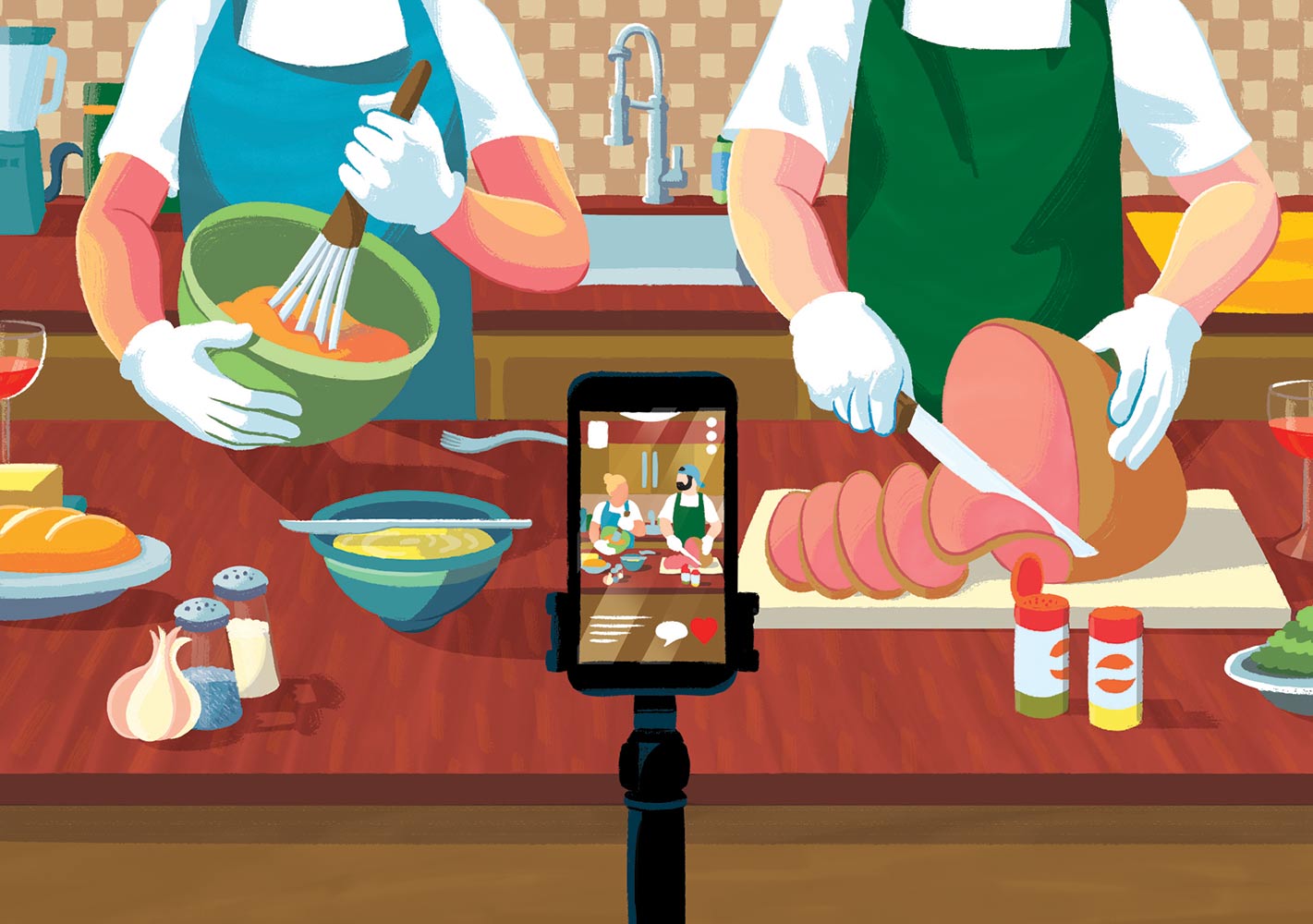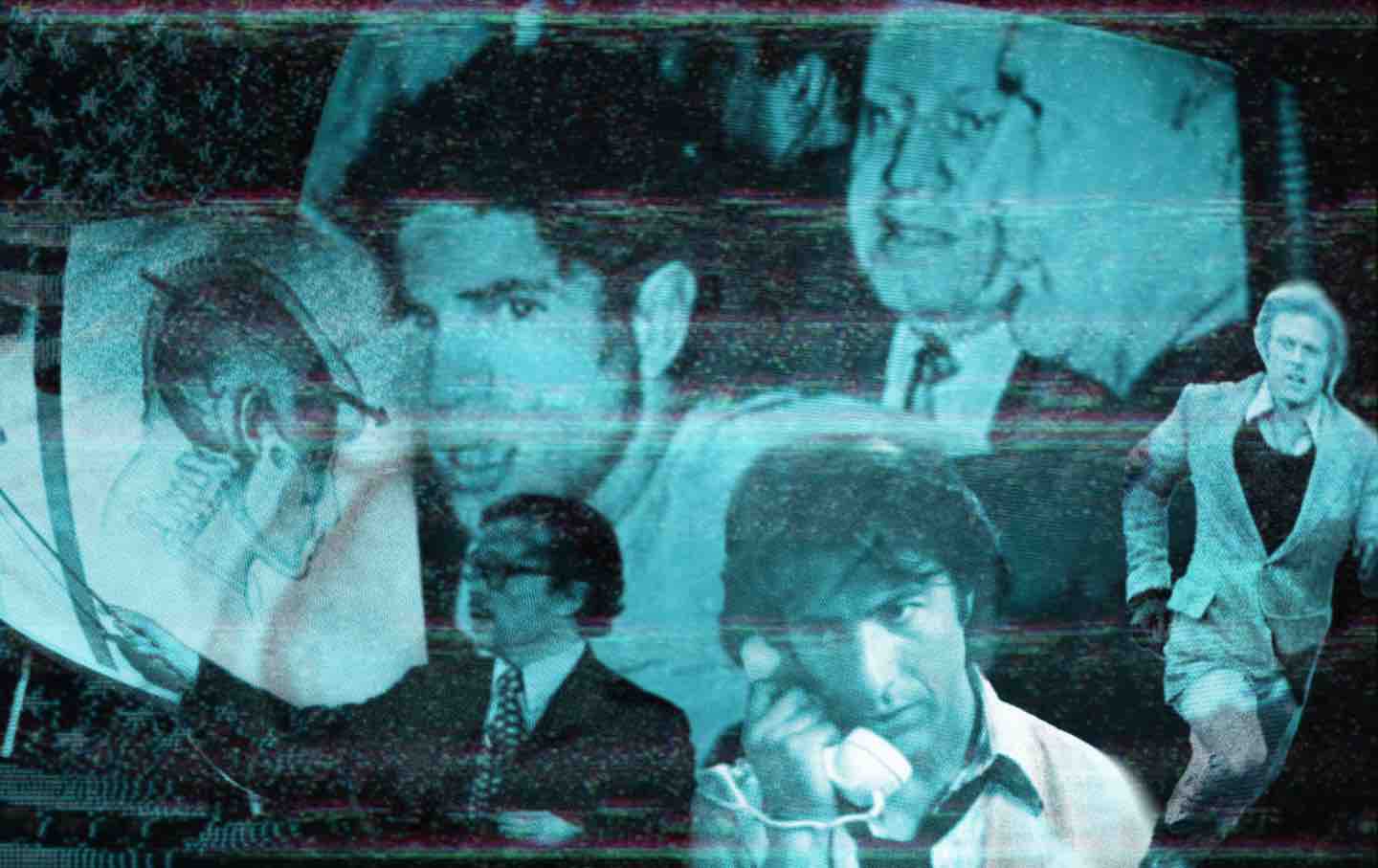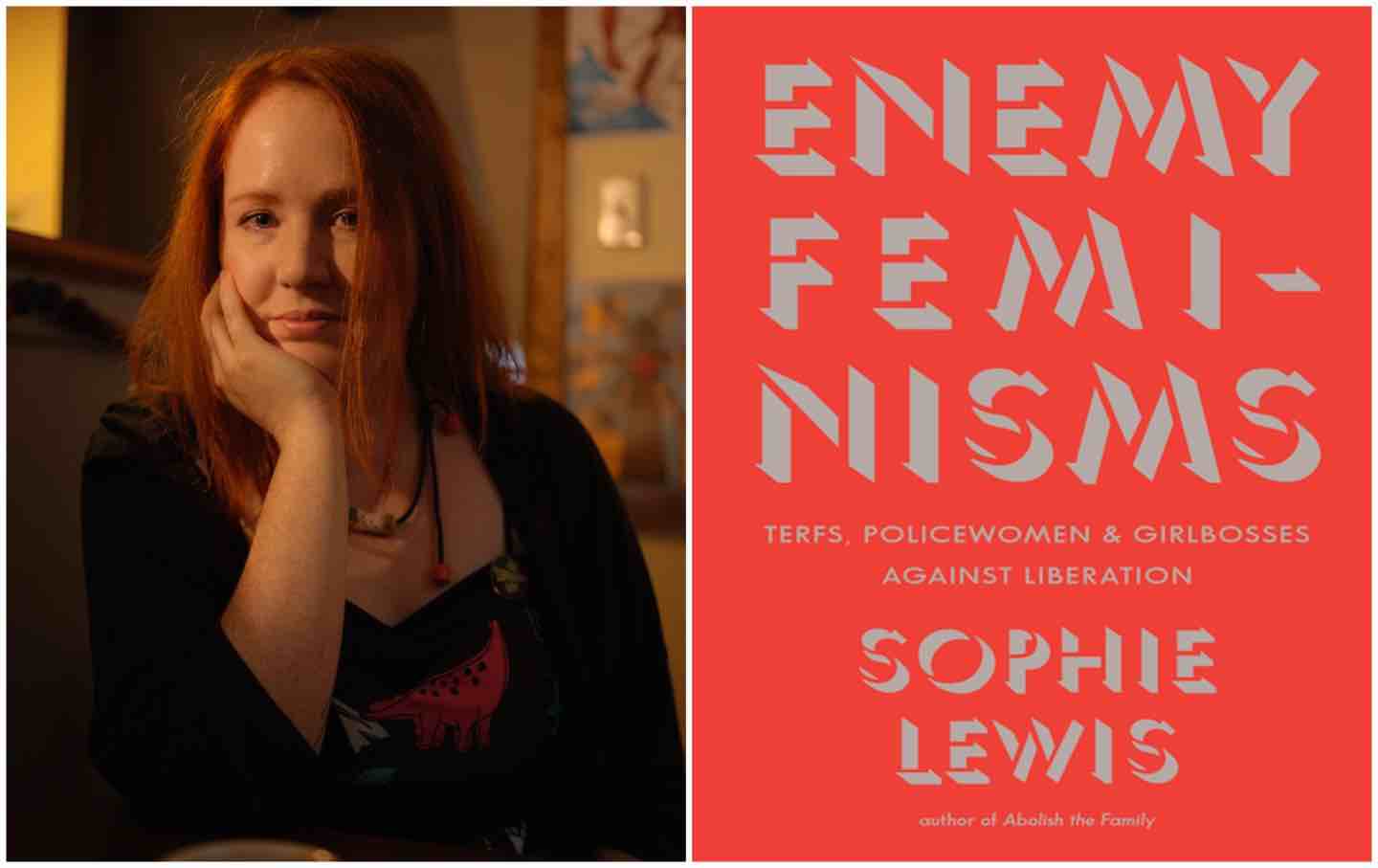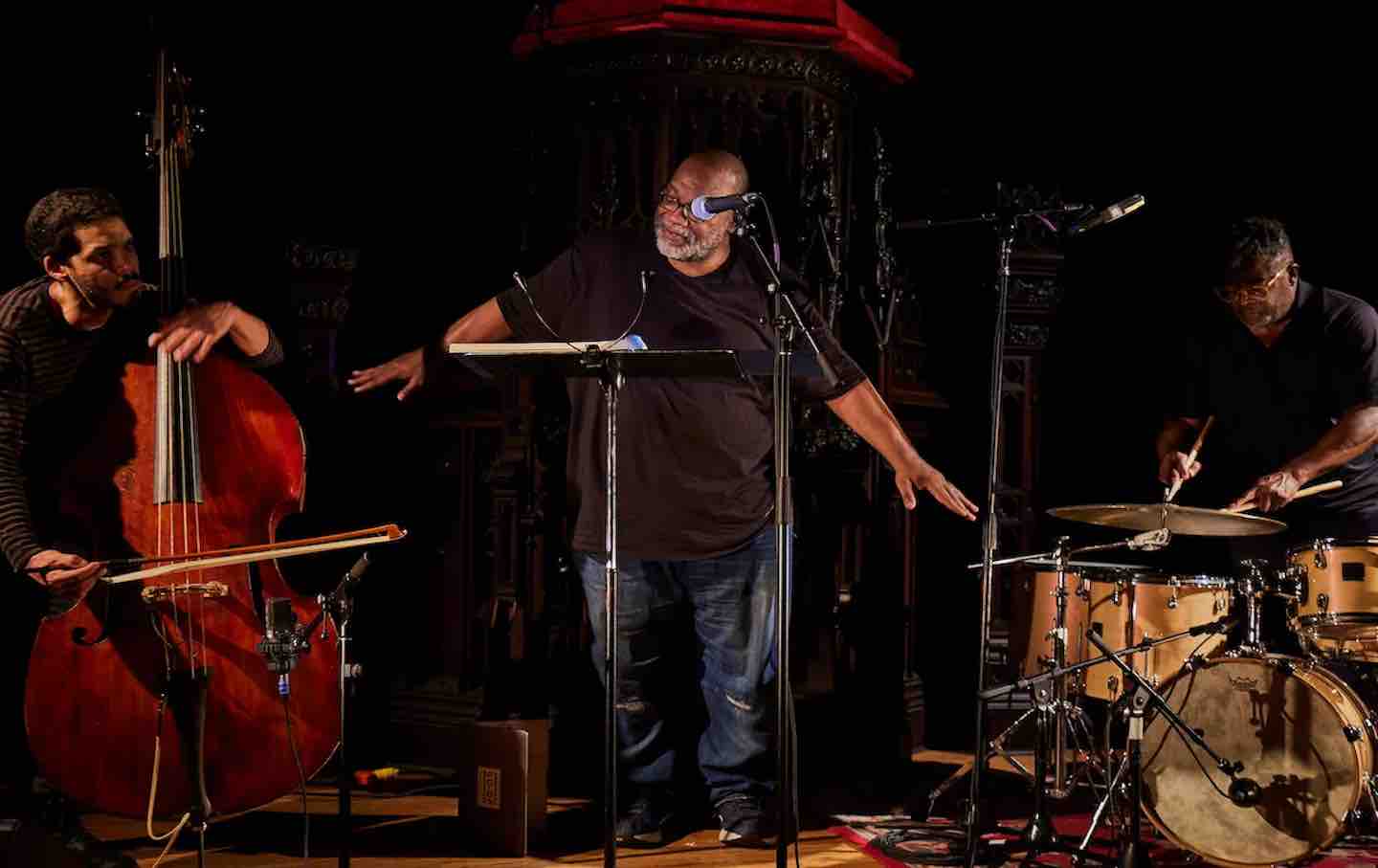Don’t Try This at Home
The rise of the influencer chef.
The Rise of the Influencer Chefs
How a new generation of food TV on Tiktok and Instagram is remaking how we relate to cooking and eating.

Owen Han is making a sandwich. He does this often. In fact, making sandwiches is the primary source of Han’s celebrity, the reason why he has accumulated 7.3 million followers across TikTok, Instagram, and YouTube. Where is this man from? How did he learn to cook? What drives his passion for the sandwich? What hunger leads him to seek, on a weekly basis, some fresh solution to the modern riddle of how best to combine protein, fat, and heat within a bread envelope, and to post the answer in video form online?
The answers to these questions undoubtedly exist out there on the Internet, but at this precise moment, as he rakes a chef’s knife across the top of a freshly prepared spicy chicken panini, steel and griddled bread tinning together like swords meeting in medieval combat, we’re far more interested in what he’s making. Han slices open a sourdough boule. He slaps two chicken breasts onto the cutting board, pats them dry, then hits them with a hail of salt. He tosses the breasts skin-down into a crackling pan, drops two iron weights on top of them, removes the weights, turns the breasts over, then foams them in a bath of garlicky butter. He sticks the pan in the oven and shoves the door shut. Next comes the sauce: A food processor is slammed onto the counter, and chipotle, garlic, eggs, and oil are blended together to produce an aioli. A tablespoon of the sauce is scooped up for the viewer’s enjoyment, then cracked back into the machine. Restored to the cutting board, the cooked chicken breasts are scalloped into even ribbons with a giant cleaver, then hooked off the counter with a bench scraper.
For the panini’s assembly, we are given an overhead view of a slice of bread as each layer is placed on top of it. A single, calligraphic smear of aioli comes first, followed by two slices of cheddar cheese and then lobes of rested chicken breast, all arranged into a snug puzzle. Next, a squall of additions are seen for the first time: a tomato-and-hatch-chili salsa, strips of crispy bacon, a nest of finely shredded red onion, micro-cilantro, and two squares of pepper jack. The crowning slice of bread is applied before the sandwich is spanked into a hot buttered pan, squashed with a long grill press, flipped, and then plopped back onto the board, at which point the video loops back to its beginning, where we see Han cleave the finished article and display the halved sandwich’s stratigraphic section.
The video of this spicy-chicken panini’s creation lasts 31 seconds. Throughout, the camera remains tightly trained on the workspace: We glimpse Han’s face only once, at the beginning, as he bites into the panini; otherwise he is seen only as a set of disembodied hands. Meanwhile, any questions about how we might replicate his process are left unanswered. The TikTok video includes no recipe. On Instagram, we get a desultory list of ingredients in the caption, but there are no instructions on how to re-create this creamy pocket at home. The clip unrolls amid an accelerated blur of motion and a high-fidelity aural attack of thwacks, bubbles, splashes, and echoing chops. We watch the sandwich being made, but we don’t necessarily learn how to make it.
The human worker may be an endangered species, but the human chef is in great shape. Across TikTok, Instagram, and YouTube, an unceasing torrent of videos, shorts, and stories about the making of eatables assails the hungry and curious online viewer with visions of amateur and professional cooks pickling, grating, toasting, roasting, draining, and straining the ingredients to make vitello tonnato, hachis parmentier, fesenjoon, or the perfect cheesesteak. Not since the release of Fritz Lang’s Metropolis, almost a century ago, has the human body at work enjoyed such important cinematic exposure. But whereas the peons of Lang’s Bauhaus dystopia slaved in synchronized anonymity underground while tower-dwelling elites frolicked in libraries and lush gardens, the toil of these online culinarians bridges the gap between production and recreation: We watch them labor without having any sense of how we might do so as well. This is work transformed into spectacle, the kitchen made into theater, a reintegration of the factory floor into an exalted realm of leisure. While the world ends, we watch the chefs cook.
With followers in the multimillions on TikTok and Instagram, Han represents the vanguard of a new breed of culinary abbreviators, who are united in their commitment to an increasingly compressed and assaultive style in food TV. Many of these influencer chefs also produce, in varying quantities and with varying frequency, older-fashioned cooking videos with straight-to-camera exposition and more of food TV’s historical chattiness. But long-form is not where their true talents lie. The setting in which they’re most at home, and from which they exert their black-gloved grip (the gloves in these productions are always black) over the Internet’s collective culinary consciousness, is the reel, a short video—usually less than a minute in length—that dispenses with the conversational throat-clearing of traditional TV and gets straight to the action. Explanations, descriptions of ingredients, pauses to allow the viewer time to catch up and understand each step: The reel dispenses with them all. These chefs love the quick cut, the chopping-board close-up, and the high-definition kitchen sound effect almost as much as the food itself.
Perhaps food TV was always about something else besides the food, but this new generation of food filmmakers aspires to create a very different form of culinary entertainment than in the past, one in which process—the prepping, the searing, the salamandering—matters more than the result. Autonomous sensory meridian response, the frisson of bodily pleasure produced by the stimulus of exaggerated sound—and in this case by the dance of fingers and knives prepping food—is key to their style, even if each practitioner applies their own individual touch.
Canadian chef Laurent Dagenais (@laurent.dagenais; 3.9 million followers across TikTok, Instagram, and YouTube), who always seems to be smoking a bouquet garni like it’s a joint, is a master of the finely hashed onion, the rolled and chiffonaded herb bundle, the head of garlic punched into submission over the flat of a big knife. Kian Hiatt (@cooking_with_kian; 8.9 million followers) is 14 years old and obliterates alliums with the speed and accuracy of a ballistic missile. Olivia Tiedmann (@oliviatied; 4.3 million followers) cooks risotto like she’s playing punk rock and films it that way too, the hand holding the camera as shaky as the hand making the food is deceptively assured. The bench scraper and the thin-spouted oil can are among the favored tools of the New Zealand–Australian chef Andy Hearnden (@andycooks; 14.5 million followers), while no chef peels the top off a quart container or unscrews a bottle cap more emphatically than Jesse Jenkins (@adip_food; 470,000 followers), who does his best work with liquids, drawing out stirs, pours, simmers, and drizzles for maximal paresthesia.
Albert Niazhvinski (@albert_cancook; 37.4 million followers) and Bayashi (@bayashi.tv; 86.7 million followers) are lords of the stack, piling chicken breasts, steaks, burger patties, and cheese slices into sweaty towers that are as structurally unviable as their finished work often appears inedible. In the captions to his videos, Bayashi likes to ask “Eat or pass?”; in the comments, “pass” almost always wins. Meanwhile, Niazhvinski is as much a mime as he is a chef: His narratives, which are usually framed as a kind of quest born of deprivation (the food he ordered for delivery shows up at his house, but the packages are all empty; he’s just undergone surgery and is faced with the horror of a tray of hospital food; he’s on trial for crimes against cooking and has to prove his innocence; he’s in jail), have the slapstick inventiveness of silent-film comedy, while being beseechingly loud at the same time.
Yes, but how do they do it? For many years, the point of food TV was to answer this basic question, to reveal the mysteries of the stovetop to the harried and clueless home cook. The earliest and most influential food shows on US television, such as James Beard’s I Love to Eat and Julia Child’s The French Chef, were instructive in nature, guiding the home viewer through the precise steps needed to bake a whole striped bass, roast a chicken, or trim and truss a boneless leg of lamb; they were an education in domesticity. Food TV stayed this way until the end of the last century, before exploding in size and variety under the dual demands of cable and streaming. Starting in the 2000s, competition shows (Top Chef, Chopped, Beat Bobby Flay), travelogues (Anthony Bourdain’s No Reservations, Guy Fieri’s Diners, Drive-Ins and Dives), and a series of mystico-military boot camps and restaurant turnaround projects (Worst Cooks in America, Gordon Ramsay’s Kitchen Nightmares) joined the more conventional output of instructional cooks like Martha Stewart and Rachael Ray as cornerstones of food TV.
As chefs became public figures and eventually celebrities in their own right, the attention surrounding them metastasized into a kind of cult. Essential to this new ideology—the ideology of the foodie—was the idea of the chef as artistic genius, a singular creator conjuring mind-bending fantasias of flavor and texture into being via the alchemy of some unaccountable inspiration. Gone was the actual work these geniuses did. In the documentaries and profiles of the new celebrity chefs, the question of who did the preparation and cooking to wrestle these extravagant, improbable creations into material reality was rarely addressed. Ferran Adrià’s liquid olive, Massimo Bottura’s splattered lemon tart, and Marcus Samuelsson’s meatballs simply appeared fully formed on the plate for our screen-mediated admiration, miracles of immaculate culinary conception. The workers who produced them were tucked away safely backstage, their efforts, ambitions, and identities subordinated to the glorification of a greater kitchen god.
The erasing pomposity of celebrity-chef culture reached its peak with the first few seasons of the Netflix series Chef’s Table, which profiles the life and work of a different chef in every episode. From its self-important but accessibly middlebrow soundtrack (the “Winter” concerto from Vivaldi’s Four Seasons) to its rich tableaux of preciously plated fine-dining dishes and long tracking shots of its subjects in brooding, ambulant contemplation, Chef’s Table has arguably done more than any other TV show to popularize the notion that restaurant cooking is a creative endeavor equal in prestige to filmmaking, writing, or making music.
The episode on the Argentine chef and barbecue guru Francis Mallmann, from the show’s first season, exemplified all the excesses and silliness of this self-serious turn to chef worship. Airing at a time before TikTok and Instagram had fully inundated the Internet with cooking content, the episode offered us a lavishly produced portrait of the man who is often described as South America’s most famous chef, and nowhere more powerfully so than in his own mind. We are introduced to Mallmann as he cooks slabs of meat and various intimidatingly large tubers over (and sometimes directly in) a fire on the small island he owns in a mountain-ringed lake at the tip of Patagonia; the action switches between scenes of him blistering whole animal carcasses over blazing pits in the Patagonian wilderness and shots of him seated lakeside in a blanketing Andean poncho, musing villainously on food, friendship, sex, and the necessity of perpetual rupture.
The cooks doing all the work to prepare these feasts are shown only fleetingly, as disciples striving silently to realize the vision of their leader, this great master of the coals. One scene shows a set of rugged young underlings filling empanadas in a line while Mallmann describes how wonderful it is to have help: “When we cook outside for big parties, I usually have a lot of staff. I like to have a band of gypsy chefs. We call it maestranza, which is a beautiful word in Spanish. Maestranza means ‘the people who are around you helping.’ It’s very romantic.” On the rare occasions we hear directly from the members of the maestranza, they remain nameless.
The episode ends with a jagged crescendo of strings and Mallmann bloviating about the radical possibilities of uncertainty over a montage of some of the most unadventurous food imaginable: roast chicken with honey gremolata, baked salmon with aioli, mussels in garlic and white wine, pumpkin and goat cheese. “Embrace risk,” the message seems to be, “and roast a chicken!” Shoveling earth to build a pit for the realization of Mallmann’s fiery mediocrities, their faces obscured by the setting sun, the assistants pictured in this final scene bear an uncanny resemblance to the nameless machinists of Metropolis’s vast subterranean chambers. The labor is essential; the laborers are replaceable.
The new food “TV” of influencer chefs is perhaps best read as a reaction against the orchestral self-importance of shows like Chef’s Table. A creature of the Internet rather than traditional television, it is shot on phones rather than film or videotape and embraces the DIY production ethos of online. Instead of high art, popular standards of the classical music repertory, and fresco-like presentations of tables laden with finished dishes, the new food TV emphasizes skill, artisanship, assembly; instead of faux-philosophical ruminations on the creative process, we see the mechanics of cooking in action. In this way, the new culinary entertainment owes its parentage to an earlier era of food television, in which small-screen cooks enacted the labor of production for their audiences. But there is a difference, of course: The new food TV, unlike the work of its televisual ancestors like Beard or Child, is not designed to offer a step-by-step guide to putting the dishes together; it exists first and foremost as a demonstration of skill. If the streaming services dish up a form of prestige chef TV that is always slowing things down to disguise the mundanity of what’s happening on-screen, then the new food TV speeds everything up. It seeks to bewilder rather than guide, to impress rather than instruct. “You might want to try this at home,” it tells us, “but you probably can’t.”
This new culinary visual aesthetic of quick cuts—both on the chopping board and in the editing suite—has not yet caught on among the streaming services, but in the larger world of documentary filmmaking, the ergonomics of cooking are receiving fresh appreciation. Offering a take on the labor theory of culinary value that diverges radically from Netflix’s self-wetting exercises in chef worship, the new four-hour Frederick Wiseman documentary Menus-Plaisirs—Les Troisgros, now screening on PBS, revels in the small pleasures (the pun of the film’s title) of kitchen work at a three-Michelin-star restaurant in rural France. Where shows like Chef’s Table gloss over the off-screen exertions needed to bring restaurant-quality food to the plate, Wiseman makes prep, recipe testing, the trade-off between human effort and gastronomic invention, and the often anguished conversations that accompany the journey of a basket of produce from the delivery truck to the table the absolute focus of his camera’s attention.
As in the reels of TikTok and Instagram, here too we see cooks cooking. We watch them receive the produce: sacks of potatoes, crates of asparagus and spring onions, boxes of agitated crayfish. We see them gut and butcher fish, french lamb racks, air great lakes of tempered chocolate. Herbs are brunoised, garlic is shaved on a baby mandoline, snails pop in the pan under the blanket of a fast reducing sauce. The camera lingers as much on the work itself as on the faces of those performing it. Wiseman presents the cooks as preternaturally still and emotionless, figures of deep concentration and calm. Like the influencer chefs, they are not artists so much as artisans showing off their craft.
Popular
“swipe left below to view more authors”Swipe →We also see moments of real tension, along with the gentle exercise of a resolving authority. One particularly memorable scene shows the restaurant’s patriarch and head chef, Michel Troisgros, patiently chiding a young cook who has failed to correctly exsanguinate a tray of brains, thereby rendering the organs unusable. Troisgros ushers the cook into a small library set off to the side of the kitchen and reads from the Larousse Gastronomique: “‘Preparing brains. Wash the brain under cold running water, then remove the membranes and the blood vessels.’ You see, if you’d read this, you’d have known.” At another point, the elder Troisgros attempts to persuade his son Léo, also a chef in the Troisgros restaurant group, to remove almond puree from an elderberry, rhubarb, fromage blanc, and almond sauce that he’s been working on to go with a dish of white asparagus. A mousseline of almond has already been approved for inclusion in another dish; to run two almond sauces on the same menu would be gauche. “Why not do elderberry without the almonds?” Michel asks. His face buried in his hands, Léo exasperatedly replies: “Because I’ve been working on this for three weeks.”
It’s strangely mesmerizing stuff, the workplace conversation turned into high observational art. But when one thinks about it, it’s also not very different from the reels of the influencer chefs, which it’s possible to binge in great loops that eventually extend to lengths that would do Wiseman proud. There is, of course, a considerable gulf in artistic ambition between the documentaries of Wiseman and the work of the culinary influencers, but in their abbreviated form, the reels are just as gripping, just as detailed, just as dedicated to documenting the minutiae of culinary artisanship as Menus-Plaisirs—Les Troisgros is. The kinship between a cinematic anthropologist like Wiseman and a TikToker making 30-second sandwich videos might not seem immediately obvious; Wiseman spends months stalking his subjects, and his films invariably circle some evanescent truth in human relations. But the influencer chefs and the Wiseman revealed in Menus-Plaisirs share a basic concern with gastronomic procedure: They value the guts of production over the glory of the finished dish. Their creations are variants of the same spectacle, involving the same basic act: a single cook dicing an onion, infusing an oil, cleaning an organ, or searing a slab of meat.
The new food TV, whether it shows someone frying a Dorito-crusted mac-and-cheese doughnut in a prison cell (@albert_cancook; 37.4 million followers) or a garlanded culinary maestro plating a ring of passion-fruit-sauced kidneys (Michel Troisgros; not on social media), is not instructional in the manner of traditional cooking content. On the contrary, it’s aggressively anti-instructional, and seeks instead to celebrate skill. In place of education, it delights in the pure performance of professional cookery: the precise knifework and fluency with fire, the embarrassment of counter equipment, all those enragingly uniform cuts and cheffy flourishes with unprocessed ingredients in hand. In this way, it represents a classic assertion of craft and artisanship—a display that’s somewhat reminiscent of the magician’s sleight of hand and connects to a historical fashion, among practitioners of the trades, for displaying a skill while obscuring its inner workings. Want to try turning an artichoke at home? Don’t—watch a professional do it instead.
This mechanic entertainment is designed not for replication but admiration, complementing the broader trend in the restaurant world of open kitchens and special “chef’s table” seatings for groups at the very edge of the pass. It fits a society-wide desire to be close to the culinary action of food-making without having to get involved in the messy business of actually making anything. Food is, of course, consumed as much with the eyes as with the tongue. But its visual catchment now exceeds what’s on the plate, extending into the prep kitchen, the walk-in, the garde-manger, and the sauté station. When we eat today, and even when we dream of eating, the real meal is the feast of others’ labor.








